How Nicola Harding Crafts Colorful Homes That Hold the Soul
In her new book Homing Instinct (Rizzoli), the British designer reflects on her search for belonging and reveals how color, craft, and intuition can forge a lasting sense of place
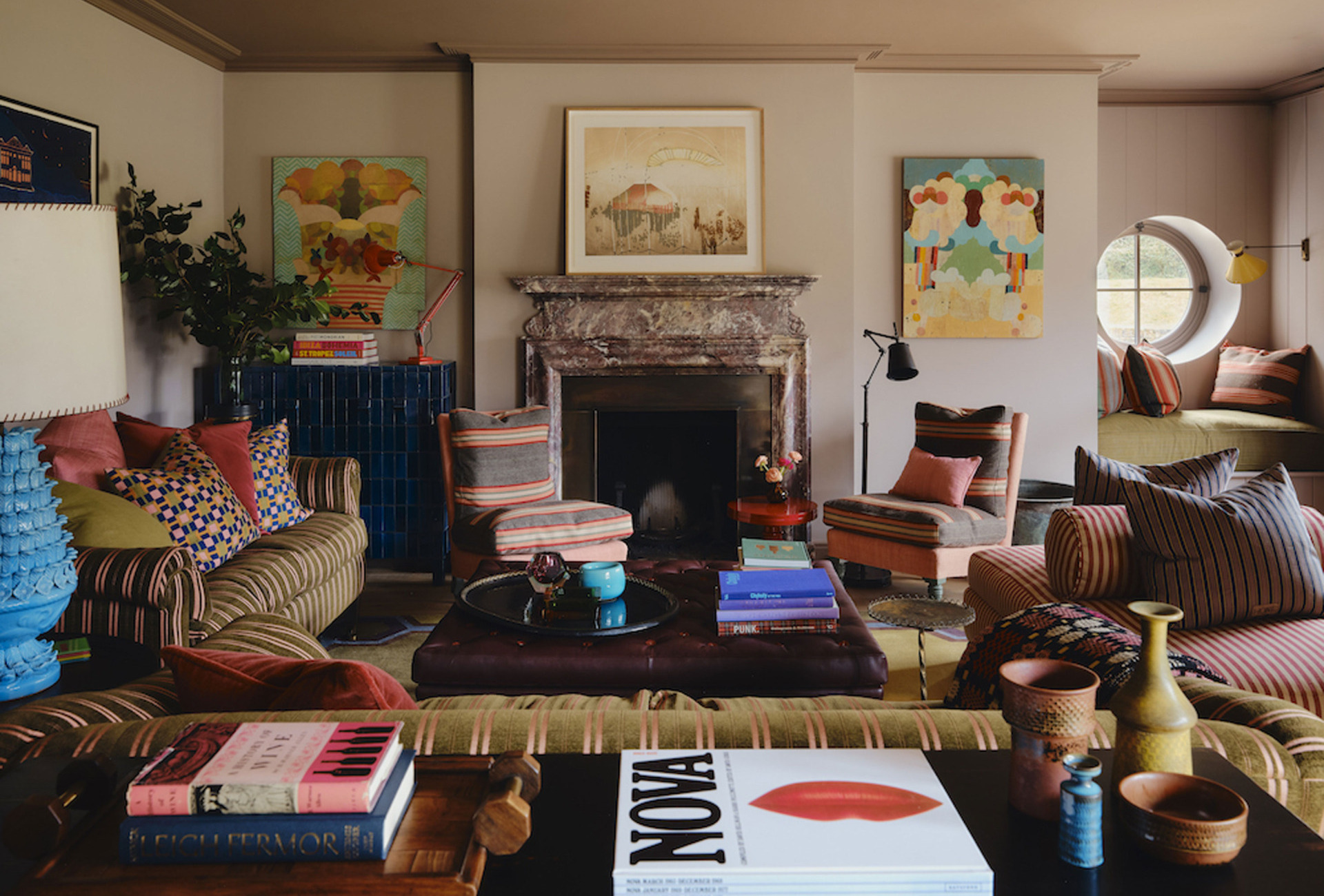
“I always craved a sense of belonging,” says Nicola Harding. “I had a real thirst to be held by a place, for it to feel like it fit me.” That feeling eluded the British designer during an itinerant childhood spent in military quarters, where houses felt identical and neighbors rarely lingered long enough to leave a trace. But it took hold during sporadic visits to her godfather’s enchanting Georgian townhouse in Richmond, an unconventional yet unforgettable home she remembers as “falling apart but crammed with things they collected on their travels.” Among the castoff furniture, mismatched crockery, and motley crew of guests with nowhere else to go, she absorbed the alchemy of comfort, care, and joyful imperfection that continues to define her award-winning interiors.
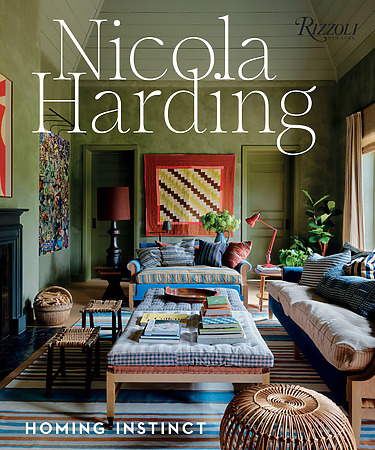
Her new monograph, Homing Instinct (Rizzoli), traces that pursuit since Harding founded her nimble London firm nearly two decades ago. The tome unpacks how Harding channels early lessons about balance and the meaning of belonging to devise endearing, richly layered homes suffused with lived-in charm, colorful flourishes, and unfussy comfort. Trained in garden design under passionate horticulturist Arne Maynard, she learned to value “a combination of classicism and rule-breaking”—and in doing so mastered a beguilingly simple design approach that involves letting her intuition guide decisions around color and light. “Unlocking the soul of a place often means undressing it, revealing what was there to begin with,” she says. That perspective underpins her residential and hospitality work alike, from ivy-covered country houses and secluded Tuscan retreats to the newly revived Cavendish Hotel at Chatsworth, all united in their nature-inspired palettes, atmosphere of country-house coziness, and traditional charm.
Below, in an interview that has been edited for length and clarity, Harding discusses her instinctive approach to color, how she uncovers the souls of houses, and the quintessentially British sensibility embedded in her interiors.
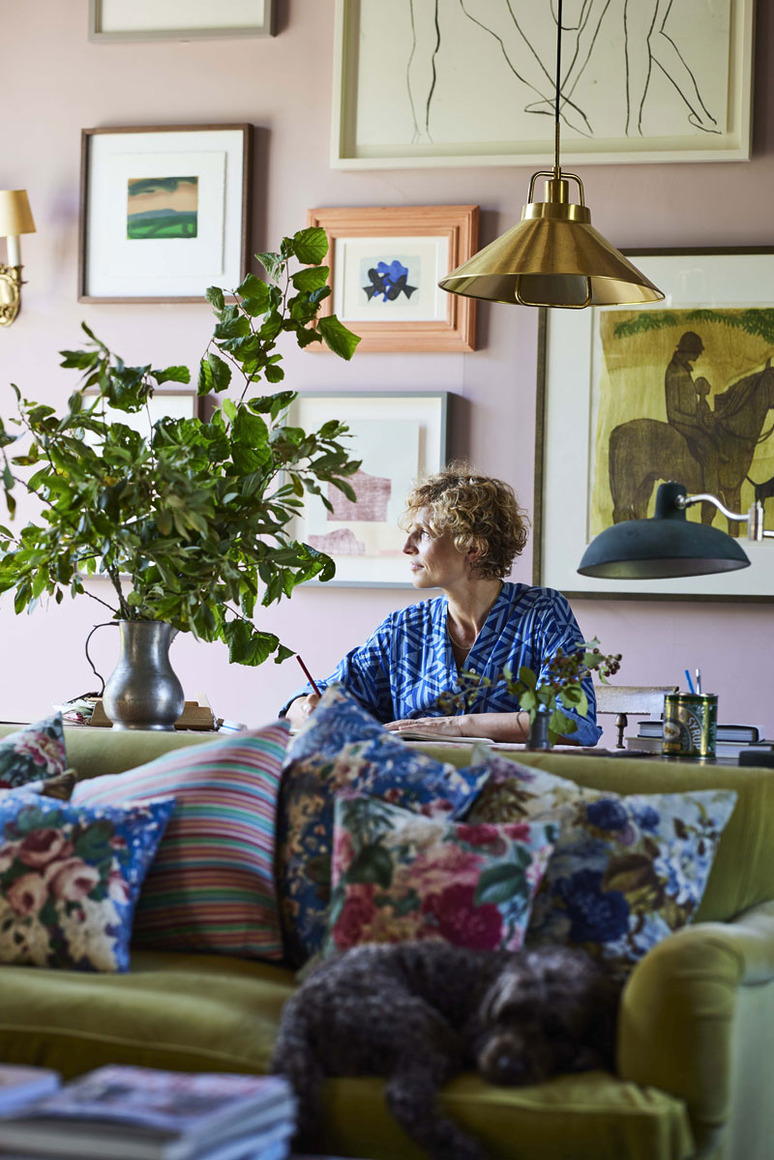
I always craved a sense of belonging. I had a real thirst to be held by a place, for it to feel like it fit me—who I was, who I wanted to be, who I wanted to present to the world. Somewhere that would help me manifest the life I wanted to lead. My father was a helicopter pilot, and we lived in military quarters much of the time. These houses were all built at the same moment, filled with the same furniture, fabrics, and crockery. Because everyone was moving so often, there wasn’t the chance to infuse them with a sense of history or care.
Staying with my godfather and his husband in their Georgian townhouse was the complete opposite. Their house was falling apart but crammed with things they collected on their travels, pieces that had been given to them, and treasures other people might have thrown away. The atmosphere was mesmerizing, and I was gripped by the alchemy of how those things created warmth and belonging. It was in the imperfection that the magic seemed to happen. Perfect places didn’t move me in the same way. They also welcomed people who didn’t have homes of their own—waifs and strays who were invited to stay and became part of the household. Just as they gave unwanted furniture a new life, they gave people a place where they belonged. That was incredibly powerful to me. I understood that when things aren’t too controlled, when there isn’t a rigid idea of what fits and what doesn’t, people feel more at ease.
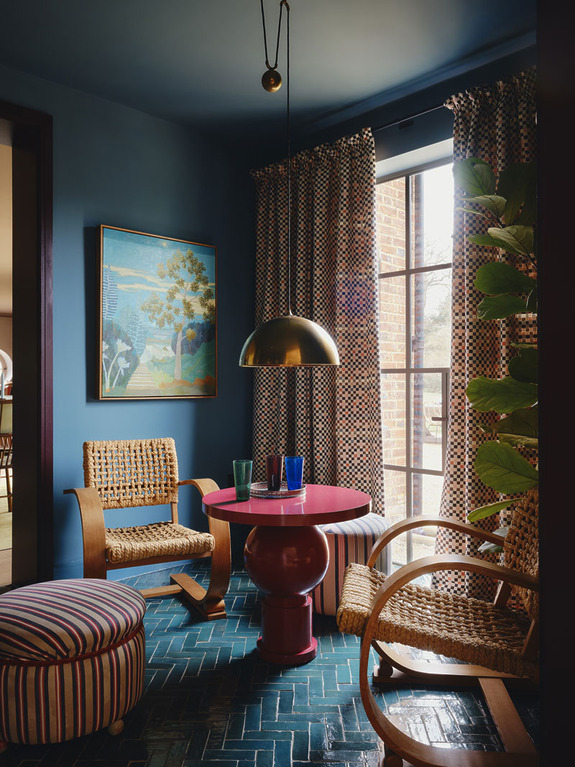
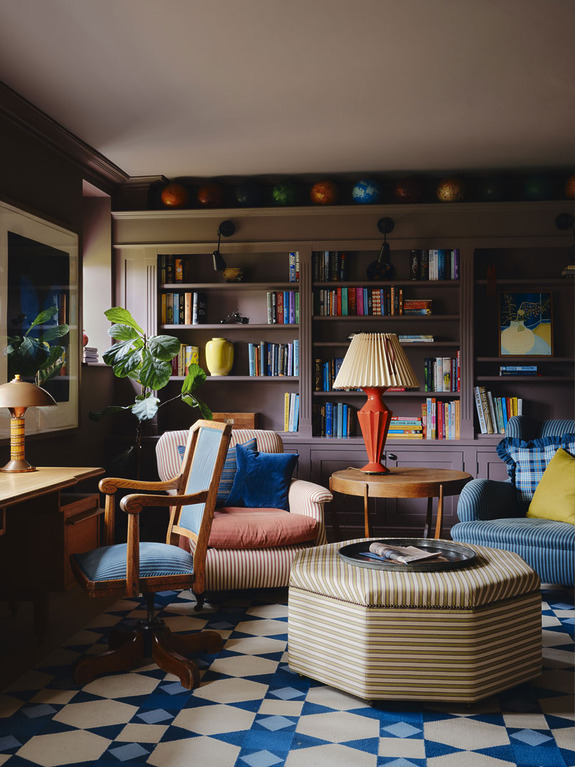
The more love you put out, the more there is. That experience shaped how I think about home. When you look closely at something, or someone, and you try to understand it, you can’t help but appreciate it. That’s true of people as much as things. When I work with clients, I can’t help but fall a little in love with them, because to create their home rather than mine, I need to understand them. Once I do, even quirks that might seem awkward at first glance become endearing.
Unlocking the soul of a place often means undressing it—revealing what was there to begin with. Many old buildings have had their character ironed out in the pursuit of perfection, and they lose their charm. It can feel like the life has been sucked out of them. I start by asking: what was the original meaning? Who has lived here? What traces have they left that we want to remember and celebrate? Then I look at what we can layer in that connects to those stories. It’s a bit like clothing. You can admire a garment, but if it doesn’t fit the person, it feels wrong. A house might be lovely in its own way, but if it doesn’t fit its inhabitants, it won’t feel right.
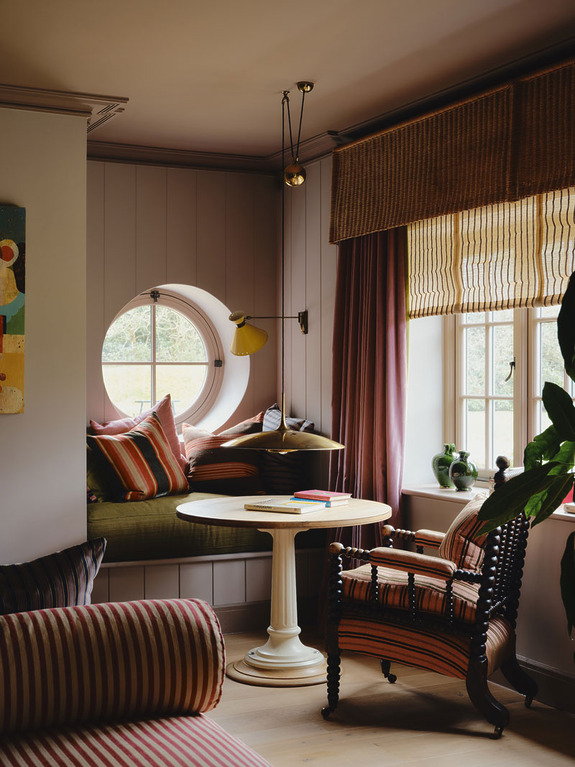
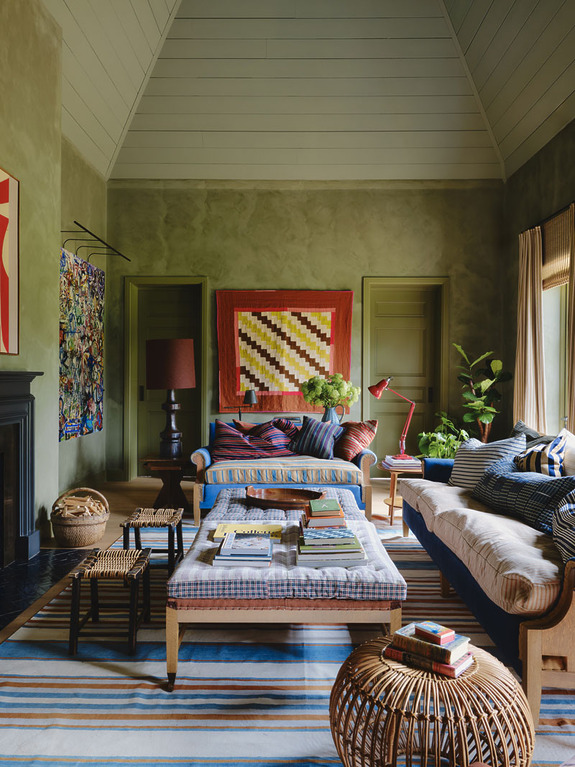
The magic happens when the right place and the right people bring out the best in each other. My training in garden design shaped this way of thinking. I worked with Arne Maynard, whose gardens have strong classical bones—hedges, garden rooms, structure—that are softened with romantic planting and moments of whimsy. That balance of structure and play is something I carry into interiors. If there’s something familiar and grounding, people feel secure. Layer in the unexpected, and it becomes interesting, relaxed, and alive.
I like mixing masculine and feminine elements. Something handsome and grounding, like leather or metal, alongside something more romantic or soft. I enjoy the conversation between inside and out: how the view through a window connects to what’s inside, how lighting transforms a garden at night, how a battered garden table might become a desk indoors with a beautiful lampshade on it. Lighting is essential. In Britain, it gets dark at three in the afternoon in winter, which could be gloomy, but actually it gives us another palette to work with. Pools of light inside create warmth and intimacy, while glimpses of subtle light outside can draw your eye and make a place feel welcoming without overwhelming it.
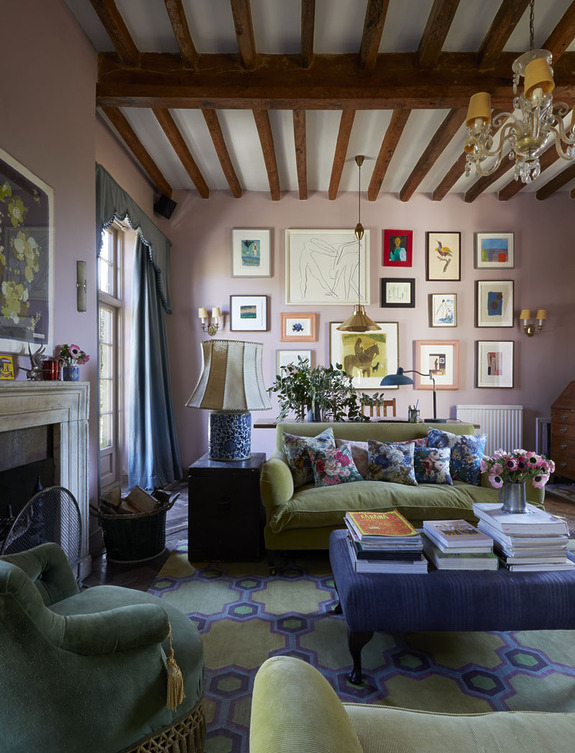
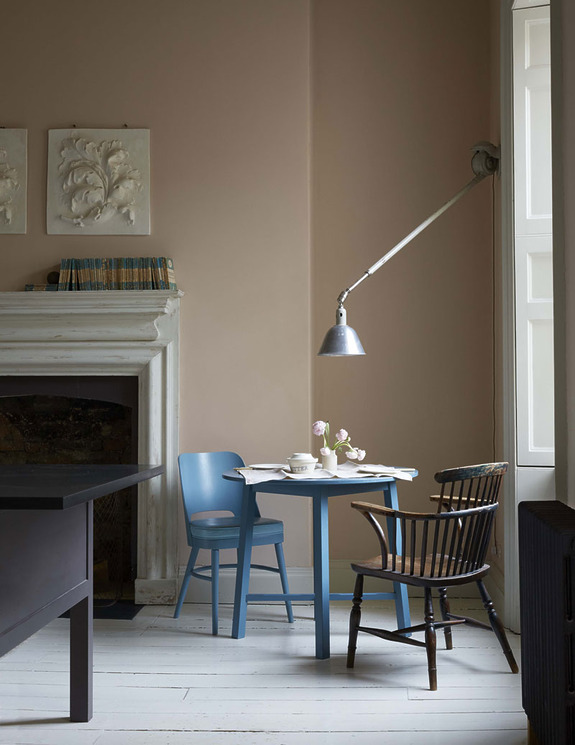
Color, too, nurtures the soul. I know convention says to start with a rug or a piece of art and build the palette from there, but I often start with color because it sets the mood and accentuates a space’s strengths. Color can dial up the good and quieten the not-so-good. I spend time with clients to understand how they live and when they use each room. A kitchen used in the morning should be in the brightest part of the house. A sitting room that’s mainly used in the evening might benefit from a richer palette suited to lamplight and firelight.
Paint is one of the most transformative tools we have, and choosing the right quality matters. Natural pigments feel restorative, connecting us to the outdoors. Synthetic shades can be impressive, but they’re quite taxing to live with. And it’s rarely about a single color. The power comes from combinations—harmonies that soothe, contrasts that energize. Film is a big influence on me. Wes Anderson’s fantastical palettes, the joyful colors of The Durrells, or the bold tones in the recent Emma movie show how color alone can transport you. When it comes down to it, we want to be in places rather than spaces. Sweeping rooms that look good in photographs don’t matter as much as the tucked-away corner with a pool of light where you feel cocooned. It’s human instinct to want to feel safe and protected, and those corners provide that.
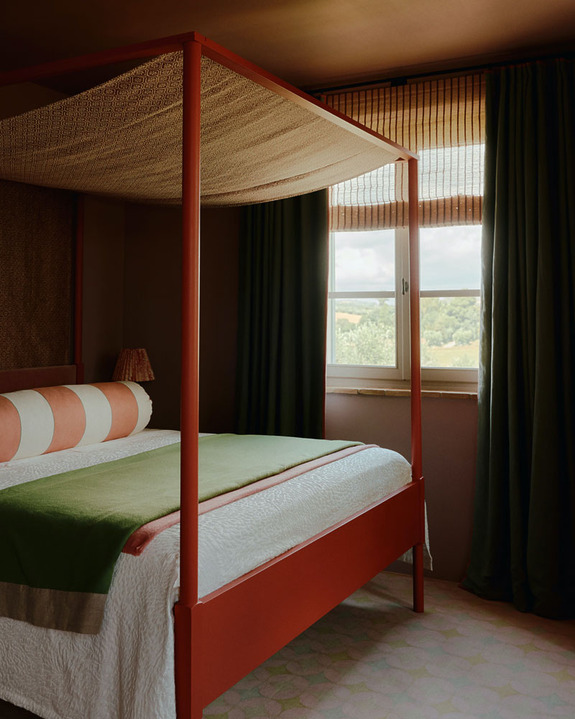
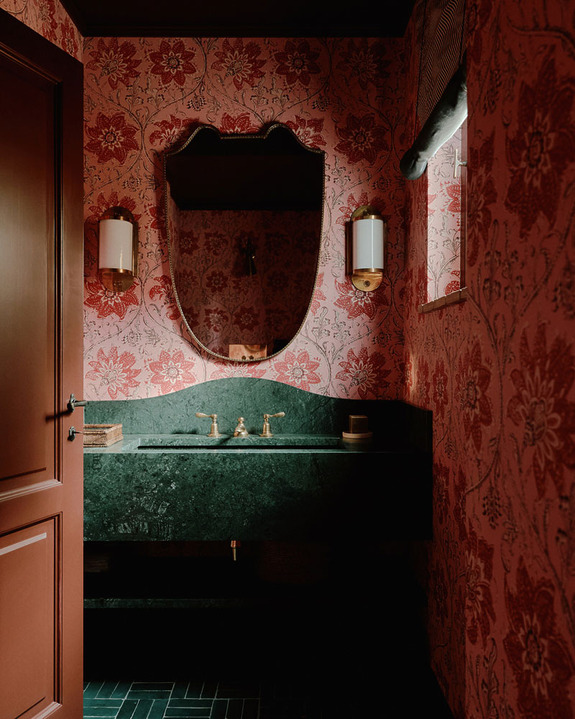
My work has been described as quintessentially British. Perhaps that comes from our culture of mending and making do, of cherishing rather than discarding. Over generations, that has created interiors that feel evolved rather than over-labored, more comfortable and easeful. We also have a rich culture of craftsmanship that’s still alive. Old and new pieces can sit together because both carry integrity in their making. Even if one looks sharp and modern, the quality of its materials and workmanship connects it to the past.
Seventeen years into running my studio, what still excites me is that every project is different because every person is different. The biggest thing I bring is curiosity—the desire to listen deeply, not only to my clients but to the craftspeople, artisans, and collaborators I work with. Each project is a sum of parts greater than the whole. What I hope readers take from Homing Instinct is the confidence to listen to themselves. Not to follow trends or replicate someone else’s style, but to ask: what means something to me? What helps me manifest the life I want to live? If you stay true to that, and respond intelligently to your building and your own story, your home will always stand the test of time.